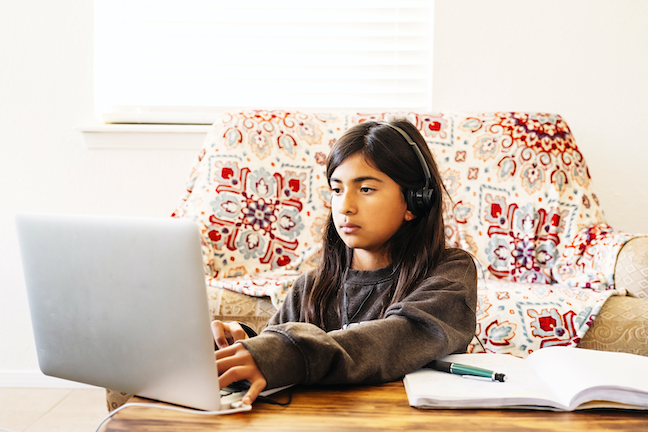Students in grades 3 through 8 made steady gains in reading but lost ground in math during COVID-19 school closures, according to a report released Tuesday by NWEA testing nonprofit.
While learning losses were not as steep as had been feared when the pandemic began, a significant number of students—generally from low-income and other vulnerable groups—did not participate in testing conducted this fall because of online learning problems or other issues, NWEA’s researchers say.
“While there’s some good news here, we want to stress that not all students are represented in the data, especially from our most marginalized communities,” said Beth Tarasawa, NWEA’s executive vice president of research. “This increases the urgency to better connect to students and families who may be weathering the COVID storm very differently.”
The students who were tested this fall—both in-person and remotely—performed at the same level in reading compared to fall 2019 but scored 5 to 10 percentile points lower in math.
More from DA: Fall testing paints fuller picture of COVID learning loss
Students scored better than NWEA’s projections in reading, while math scores met the nonprofit’s expectations for grades 4-6 and were slightly above in grades 7-8.

One reason for the math-reading disparity may be because many parents are more comfortable helping their children with ELA assignments, Chris Minnich, CEO of NWEA, suggested during a press conference on the findings.
But as many as a quarter of students were absent from testing, the researchers say.
It’s unclear why the students were missing, whether it was because they were no longer enrolled, didn’t have access to take tests online or other reasons.
“There’s a need to focus on the one-in-four students who may not be in formal education right now,” Minnich said. “When we do get back in buildings, those students may or may not show up again. How do we make sure we’re not changing funding based on that?”
The study compared this fall’s MAP Growth assessment scores from nearly 4.4 million U.S. students to the projections made by NWEA in April. Researchers also analyzed how students performed this fall relative to a typical school year and how much progress students made since school buildings shut down in March 2020.
More from DA: How a new data tool can diversify your teaching staff







